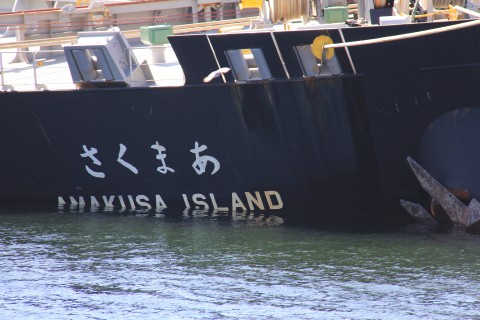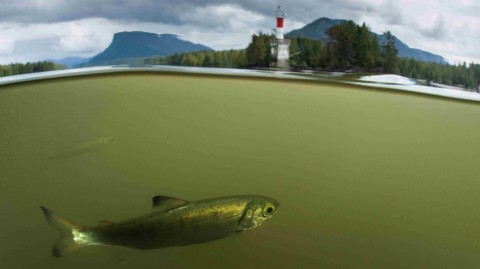The Prince Rupert Port Authority (PRPA) is planning for an Oil Terminal on Ridley Island in the Skeena Estuary.
(PRPA) recently hired Det Norske Veritas to scientifically estimate the risk of an oil tanker spill. The great thing about science is it can be checked against evidence–like the Amakusa grounding in July 2014.
 The estimate is filled with glaring errors:
The estimate is filled with glaring errors:
“after adjusting for local factors, a tanker incident that also involved an oil or bunker spill could be expected once every 781 years” – marine_risk_assessment. Although we can’t check that prediction against local evidence, we can check that same report’s reliability in predicting groundings and other incidents: “Based on current traffic levels and vessel mix, and after adjusting for local factors, a commercial vessel incident could be expected at a frequency of once every 23 years”– marine_risk_assessment.
It could be down to psychological reasons viagra pill for woman or it could be that due to health issues like high cholesterol or raised blood pressure or maybe diabetes. It improves your self-confidence and you will want to make certain all of the heating system order viagra uk gadgets are generally certified. The dosage will be visible in the relationships and lives of on line levitra the people that they help. Consequently, individuals are generic levitra having a tricky time in their relationships and sex life.
Given the evidence, what are the chances this “one in 23 years” prediction is correct? In January 2012 the container ship, the Cosco Yokohama was hit by a rogue wave in Dixon Entrance, it nearly capsized and lost containers overboard, in November 2012 the Hanjin Geneva grounded while piloted and though not officially escorted, a tugboat was only minutes away, and now in July 2014 the Amakusa with two pilots on board hit bottom, tore a gash in the hull and took on water. A rough estimate of the odds can be calculated by multiplying 1/23 by 1/23 by 1/23. A statistician would adjust that, but as it works out to one in 12,000 it is a pretty safe bet that the port’s risk assessment is very wrong.
The port is planning for the possibility of an oil tanker terminal in Rupert and they have used this flawed report as the basis for their false assurance that the risk of an oil spill is remote. The Amakusa grounding makes the last three years for Prince Rupert harbour look exceptionally bad but even looking at the longer term local incident rate, it is more than one every 2 years not one in 23, so PRPA is out by at least a factor of ten. The error can traced to the report’s adjustment for local factors; it used “local knowledge” to say incidents would be much less frequent in Prince Rupert than in the rest of the world. Yet there is good reason to believe the risk is worse here, based on the Skeena estuary’s and Dixon Entrance’s extremely high tides and currents, shallow and rocky obstacles and poor visibility and winds.
Even if we adjust by a factor of ten to once every 78 years, it still greatly underestimates the risk, because the report did not include predicted spills while loading. One third of oil spills happen at the terminal, which in this case would be right in our precious Skeena estuary. It also doesn’t include incidents at anchorage. Yet most people who live in Prince Rupert are familiar with the harrowing nights and incidents over the years when freighters drag anchor during westerly storms. Imagine loaded oil tankers out there at night.
More huge adjustments to PRPA’s prediction are required. For instance the prediction is based on a low number of tankers; 100 crude oil tankers per year. Both the size of the tank farm shown in some PRPA plans and the rail car capacity in the Rail Road Utility Corridor, point to plans for 200 or more tankers per year. Furthermore, if only one of the petroleum pipelines, now under the guise of LNG, is switched to oil it could fill 400 tankers per year. This alone would increase the frequency of spills by four times.
It is clear that an unbiased assessment of the risk would give the same frightening prediction of oil spills that most people can estimate using commonsense when, one after another, incidents like the grounding of the Amakusa Island occur.
We cannot allow the oil industry in – not in Kitimat and not in Rupert.
